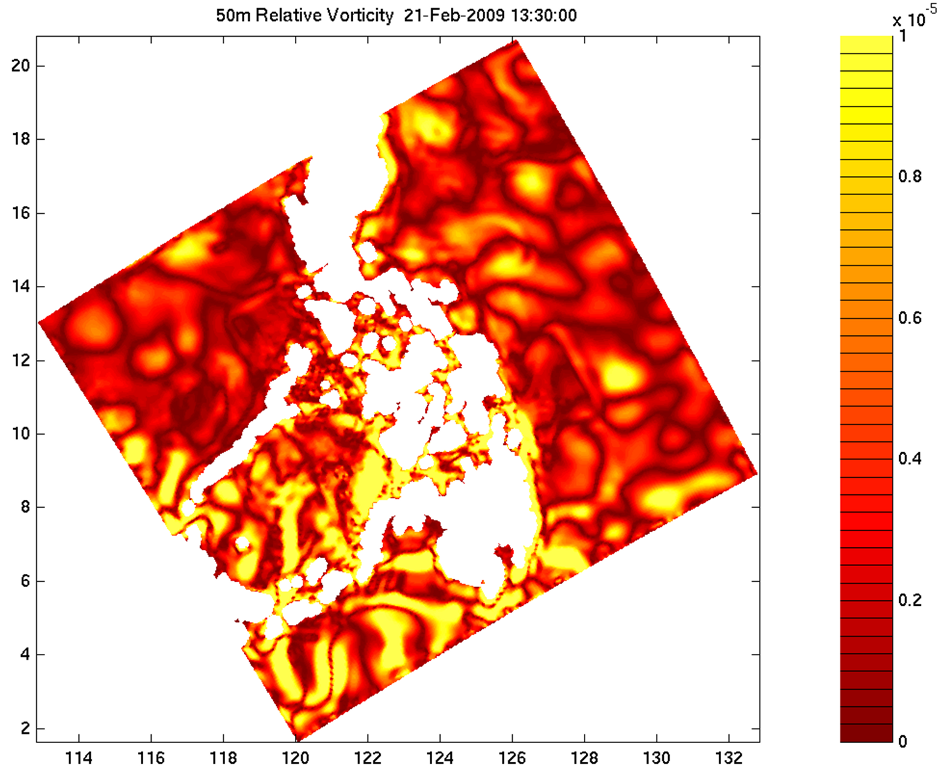|
- Model dynamics: Nutrient-Phytoplankton-Zooplankton (NPZ)
- Various regimes: single stable points and stable limit cycles
- Biomass: N+P+Z = conserved at every point
- MSEAS ATL Problems:
- Dynamics classification:
- Discover unknown biomass, biomass (time)
- Discover dynamical regimes, etc.
- Inductive model learning:
- Learn specific terms, e.g. unknown functionals, functionals (time), etc.
- Discover parameters and structures of the 0D biological reaction terms
- Determine when/where certain terms matter: e.g. when do the physical terms matter?
|
 |
|
This test case 2 is concerned with discovering and learning biological-physical dynamics from sparse ocean data and/or approximate model
information. Such learning includes quantitative learning of parameter values, model functionals and model structures, or in other words,
discovering the model equations for the system as well as the initial and boundary conditions. It also involves learning more qualitative
descriptions (but nonetheless scientific) of the system, such as describing dynamical regimes, discovering global properties of the
biological system, determining when and why the biological dynamics suddenly change, and providing locations and periods over which
certain term or process dominate, etc. Examples of terms include: advection, mixing, light-variation and grazing.
In what follows, we provide a set of examples, with an increasing level of difficulty, that aim to illustrate such applications of
learning for biological-physical ocean processes. We note that transfer learning is possible from one example to the next, as well as
active learning within or across examples.
All examples consist of Nutrient, Phytoplankton and Zooplankton (NPZ) dynamics and illustrate the effects of topography and other
physical factors on the biogeochemical interactions.
For additional information see Ueckermann and Lermusiaux (2010)
High Order Schemes for 2D Unsteady Biogeochemical Ocean Models.
|
Examples
- Example 0:
the goal is to solve for the biological reaction terms based on sparse data. Three different data sets are provided, for three different dynamics,
so that transfer learning and active learning are possible.
- Example 1: the goals of this example are to:
- Solve for the biological reaction terms in a two-dimensional in space and unsteady dynamics
- Determine where and when the physical terms perturb the biological dynamics
In this example 1, for one of the data sets, we provide more information so that a machine learning scheme can be trained.
- Example 2: The goal of this example is to apply the
methodologies developed in Example 1 to a more complex dynamical situation. Specific questions are:
- Solve for the biological reaction terms (parameters and structure)
- Among the three data sets provided, which ones have limit cycles and which ones do not, and what are the limit cycles and where do they occur?
- Determine what has changed when compared to Example 1.
- Example 3: The goal of this example is to apply the methodologies
developed in Examples 1-2 to a more complex situation
with multiple biological dynamics. Specific questions for each data set are:
- Solve for the biological reaction terms (parameters and structure), possibly using results of Examples 1-2 to accelerate learning
- Determine which data set contains regime changes if any, where/when do they occur, and what are their properties?
- Example 4: The goal of this example is to utilize all of the
results of Examples 0-3 above and suggest what may have changed in the dynamics, using
active and transfer learning.
|







